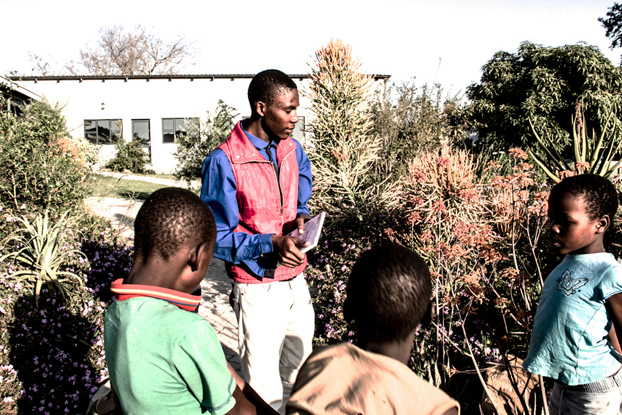957

| My experience in interacting with our Grade 4 learners (ages nine and 10 years old) last year was very insightful. On their first field trip to interact with horses and participate in a bush walk, I was struck by two things. Firstly, these children, who are living next to wilderness areas, are mostly urbanised and in some cases, have no connection to nature at all. Secondly, they have an enthusiasm and excitement for the natural world. We just have to unlock it. The rhino poaching crisis in South Africa has reached record levels and is proving to be a huge challenge for conservationists at the moment. The solution lies in conservation education. When I started guiding over 20 years ago, we lived the value that conservation cannot exist without collaboration and involvement of the communities surrounding the reserves. The economy that wildlife created, in careers and jobs in the industry, supported many families. The benefits derived from eco-tourism, created schools and clinics in many communities. Most of the ‘old-school’ trackers I worked with had herded their family’s cattle as young boys, learning to track in the bush, defend the cattle against predators, and hunt traditionally to supplement their food resources. Now, as urbanisation has crept closer and taken over the majority of those areas, most children do not get to experience nature. Their fathers and grandfathers are not passing on their skills of tracking and immersion in nature, to the next generation. With the creation of the bizhub Conservation Academy at Hazyview Digital Learning Centre (HDLC), our challenge is to educate children, our future planet leaders, on the benefits of the economy of wildlife and why it is so important to conserve our planet’s natural resources. However, I believe this is not enough. More important is to let these children feel spiritually connected to nature. Once they feel this in their heart, they will protect nature and one day, as leaders, they will hopefully make decisions in favour of the natural world. This is a huge challenge to achieve. We have therefore decided to add a conservation layer onto the existing open learning curriculum (digital, English and maths) so that Grade 4 learners can be exposed to environmental education as part of the daily curriculum at HDLC. We are investigating conservation-based apps (we are digital after all) and creating a fun space of learning that is both theoretical and practical. As I write this, we are in final talks with SANParks on allowing our students field trips into the Kruger National Park on a weekly basis, and we hope to have provided all of our young learners with a trip to the Kruger at least once by the end of the year. We will also be collaborating with field teams from private game reserves bordering Kruger, so that rangers and trackers can spend time and share their wealth of experience with our young students. With 1,000 children regularly attending HDLC every week, we have 1,000 opportunities to reconnect them to nature, to influence, mentor, coach, and ignite the enthusiasm and imagination of the next generation of possible conservation leaders. One day, we hope that these young people will have an impact on and influence future conservation models in South Africa by using restoration and wise earth stewardship. Through modern technology, ancient wisdom and nature, we aim to make a difference by living and being the new equation in conservation. |